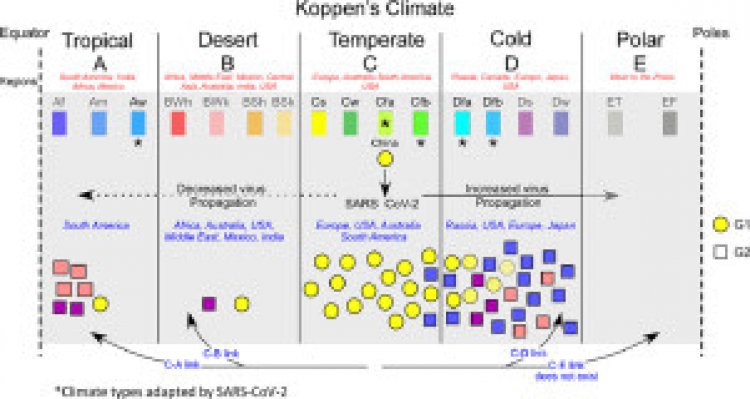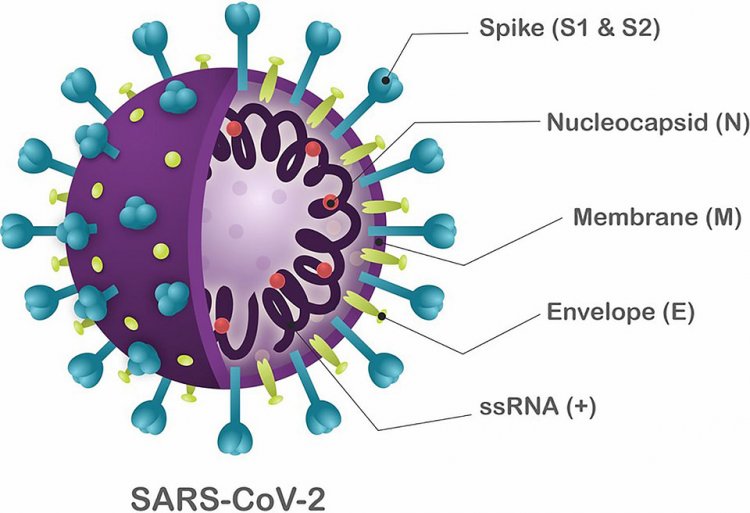Climate impact on coronavirus: Research By IISC
Two researchers of IISc, Prakash Chandra Arya and Priyanka Bajaj in their article explain why SARS-CoV-2 initially spread in the higher latitudes and later it cascaded in the tropics.

Two researchers of IISc, Prakash Chandra Arya and Priyanka Bajaj in their article explain why SARS-CoV-2 initially spread in the higher latitudes and later it cascaded in the tropics.
SARS-CoV-2 evolved to incorporate stable mutations that led to its outbreak throughout the world. The article explains how COVID-19 has spread all over the world and what precautions and foremost studies should be conducted in any such outbreak. Everyone knows that the first few cases of COVID-19 were identified and reported from Wuhan, China at the end of 2019. The disease has spread in three stages.

Stage 1: In China followed by countries with China like climate (also known as temperate climate)
Soon when China reported an outbreak of the disease with symptoms like the flu. Within a span of three to four months the COVID-19 started spreading in the coastal countries of Europe (e.g., Spain, Italy, France, Israel. Germany, United Kingdom, Poland, Austria, and Portugal). A similar outbreak was seen in the coastal regions of the USA (e.g., California, Oregon, Washington, Virginia, North Carolina, South Carolina, Georgia), South America (Sau-Paulo), and Australia (e.g., New South Wales, Victoria, Queensland, and Western Australia). Till this time there was no outbreak in countries with cold climates (especially Russia, Canada, Alaska, etc.) and hot climates (e.g., Africa, Brazil, India). When there were no restrictions and lockdown. All these countries share a common climate i.e., temperate climate. In the initial journey of the pandemic, the virus could not survive in climates other than climate similar to China.
Stage 2: Virus evolution to adapt to the neighbouring climate of stage 1 countries
Stage 1 has traumatized the above countries and with very less or no imprints of the outbreak in Russia, India, and Brazil, led many researchers all over the world to think that the disease will not spread in these countries. However, likely due to the incorporation of a stable mutation, D614G in the spike protein, led virus first adapt to the cold countries. This led to an outbreak, especially in Russia, Canada, and the Scandinavian countries. These evolved viruses could survive in all stage 1 countries. A similar time frame of three-four months was observed after the stage 2 outbreak.
Stage 3: Virus evolution to adapt to hot climate
Based on the genomic, climatic, and statistical analysis of Priyanka and Prakash, Sau-Paulo region of South America has played an important role in the spread of COVID-19 in the hot climate of the tropics. It is the only place in the whole world that connects the hot regions (tropical countries) with stage 1 climate (temperate climate). This gradation of one climate to another was a natural spreading route taken by the virus. The evolved viruses of stage 2 with small mutations could survive in the hot climate of Brazil. These mutations led to an outbreak in the whole world as most of the habitable climates were captured by SARS-CoV-2. This virus is an evolutionary virus, one of the most dangerous viruses encountered so far. Such a virus can become more deadly with time if significant mutations are acquired.
The spreading rate of SARS-CoV-2 surpassed all studies carried out all over the world due to which it could not be controlled. However, we propose such interdisciplinary studies should be carried out in the initial days of the outbreak. In the Indian context, any future evolutionary virus outbreak in Central Mexico, Lower Mexico, Brazil, Madagascar, and central Africa (Ghana, Benin, Nigeria, Cameroon, Congo, Gabon, Zaire, Central African Empire, Chad, Sudan, Uganda, and Angola) could be lethal in India. Similarly, an outbreak in the Middle East would affect Australia and Northern Africa the most. Such crucial details are provided in the article published by them in Climate Change Ecology named “Evolution and spread of SARS-CoV-2 likely to be affected by climate”. The information from this article can be used to tackle any future outbreaks by making policies e.g., which regions flight and travel should be completely avoided.


































